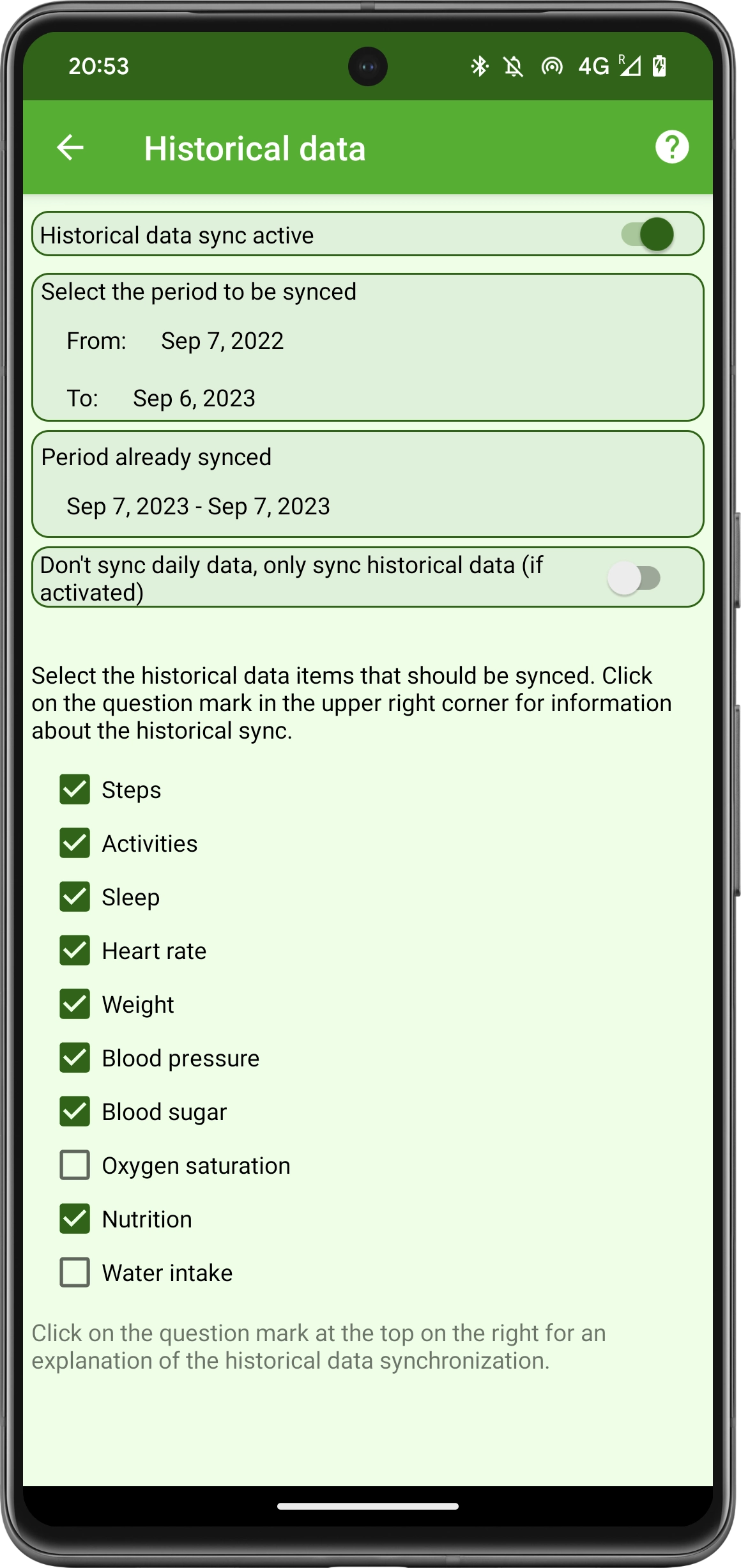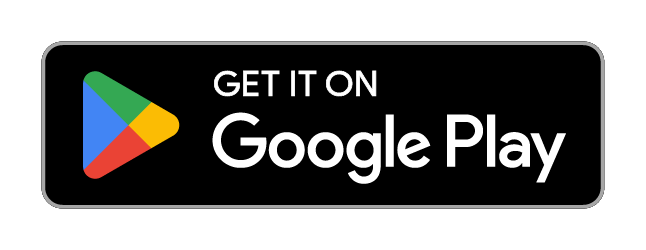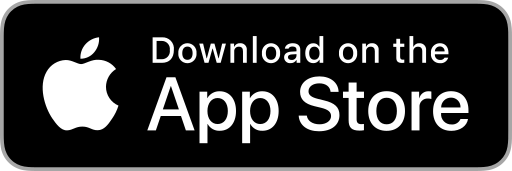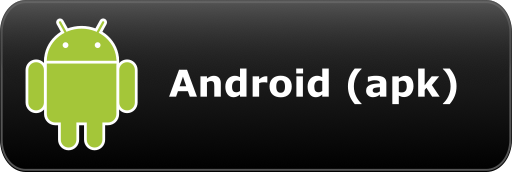Synchronize health and fitness data
Health Sync allows you to sync your step count data, activity data (including detailed activity data), sleep data, daily heart rate data, weight data (body composition), blood pressure data, blood glucose data, oxygen saturation data, breathing data, nutritional data and water intake data.
On Android devices, you can sync data from Coros, Diabetes:M, FatSecret, Fitbit, Garmin Connect, Google Fit, Health Connect, Huawei Health, MedM Health, Oura, Polar Flow, Samsung Health, Strava, Suunto and Withings.
You can sync data to FatSecret, Fitbit, Google Fit, Health Connect, Huawei Health, Intervals.icu, MapMyFitness (and other MapMy apps), Move-Me, Runalyze, Samsung Health, Schrittmeister, Smashrun, Strava and Suunto.
On iOS, syncing is supported with Apple Health, Fitbit, Garmin Connect, Huawei Health, Polar Flow, Strava and Suunto as source apps, and Apple Health, Fitbit, Intervals.icu, Runalyze, Strava and Suunto as destination apps.
Not all apps allow Health Sync to read or write your health and fitness data to the app. For example, Huawei Health allows us to read most data, but writing data to Huawei Health is limited to only weight data, blood pressure data and blood sugar data. And with Garmin Connect, almost all data can be read, except water intake. Health Sync shows you what data can be synced.
On Android, you can also sync data with Google Drive or Huawei Drive. When you sync your step count data, heart rate data, weight data or oxygen saturation data to Google Drive or Huawei Drive, the last day’s data will be written to your Google Drive or Huawei Drive in a CSV file, but also a CSV file will be generated per week and one CSV file per month. You can use these CSV files for your own purposes.
Activity data is synced to Google Drive or Huawei Drive as a CSV file (activity summary data only) and as a FIT file (with all detailed information), and if GPS data is included with the activity data, also as TCX, GPX and KML files.
Sleep data is synced to Google Drive or Huawei Drive as a CSV file, easy to read in Microsoft Excel, Google Sheets or any other application that can handle CSV files.
Star rating
User Reviews
Activity filtering
When syncing activity data, you can configure filters to prevent all activity data from being synced. For example, you can configure to sync only running and cycling activities, and not walking or other activities.
You can also configure filters based on activity duration or activity distance. If you need more activity filter options, please let us know. The activity filter is something we would like to expand based on user requests.
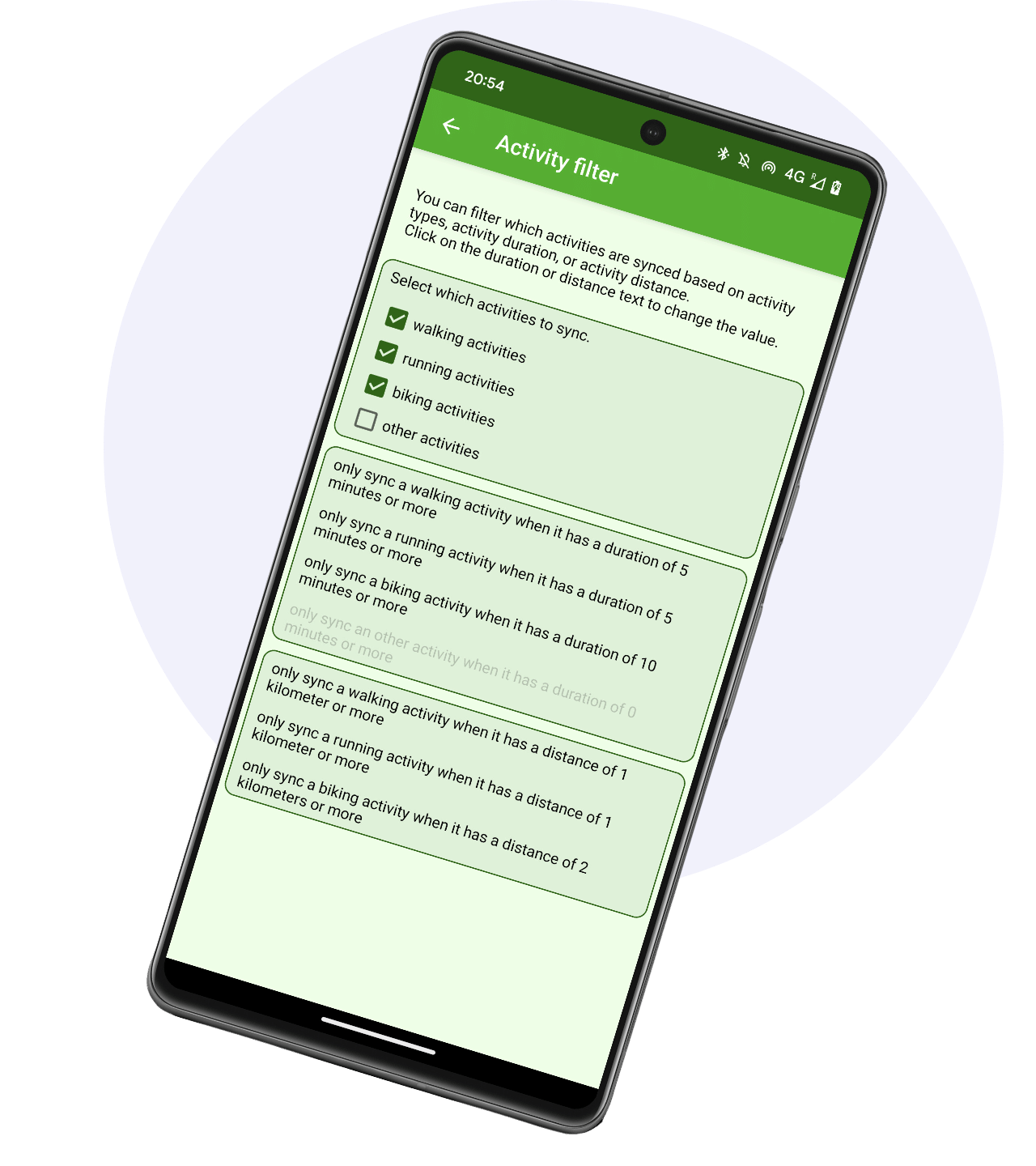

Historical data
Daily data and historical data
When you start using Health Sync, only daily data is synced. Health Sync starts with the data from the day before the day of installation. You can disable the daily sync if you only want to sync historical data (see below).
If you want to synchronize data for a period in the past, you can configure historical data synchronization. You define the period to synchronize and what data to synchronize.
The historical data synchronization works backwards in time. In the historical data page in Health Sync you can see which period has already been synchronized and which period is still being processed.
Not all historical data is synced at once
Health Sync synchronizes the historical data in batches. With each regular synchronization (maximum once every 15 minutes), one or more days in the past are synchronized.
So it can be a slow process. That’s not because we don’t want to make it faster, but because several apps apply restrictions on the number of times we can access their servers. Some have restrictions per quarter of an hour and per day, others only per hour. How fast historical data sync works depends on the apps involved.
Limitation Garmin Connect
Garmin Connect only allows syncing of the last five years of activity data, and the last two years of other data (steps, heart rate, etc.).
Trial period
When you install Health Sync, you get a one week free trial period. During or after the free trial period you can purchase a Health Sync license. You can pay a one time fee for a never ending license, or you can start a six-month subscription. It is your choice.
With the Health Sync license you can use all functionality except the sync from Withings. With the Withings integration there is an additional subscription due to the way this integration works.
During the free trial, you can use all of the app’s functionality except syncing historical data or manually resyncing days in the past. Once you license Health Sync, you can configure the historical data sync or use the manual resync option in the menu for days before the day you installed Health Sync.
If you want to stop using Health Sync during the free trial period, you can just uninstall the app. There is nothing registered related to payments or subscriptions during the free trial period, so you won’t be charged.
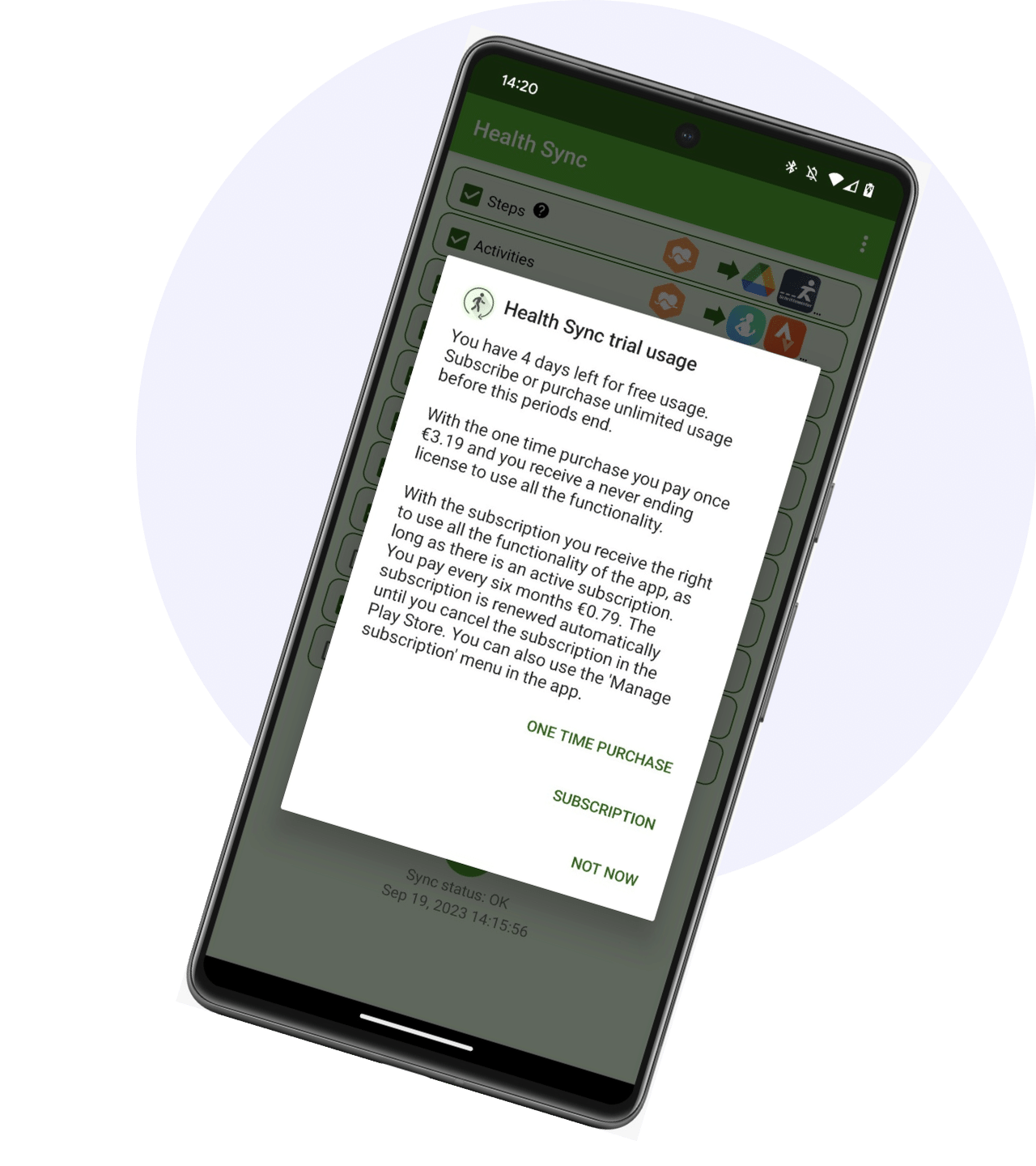
Privacy
Health Sync synchronizes your personal health and fitness data. This could be sensitive data, such as weight data, sleep data or activity data (including GPS data). We do everything we can to protect your data. This is why Health Sync does not require a Health Sync account, we don’t want any data from you. Health Sync processes the data in the memory of the app on your phone, the data is not stored in Health Sync nor stored elsewhere. The data is only stored in the app you sync with. You can read more about privacy in Health Sync’s privacy policy. If you have any doubts, please let us know.
Health Sync and Health Connect
In 2023, Google introduced the Health Connect app. Health Connect lets you sync health and fitness data between some apps. Do you still need Health Sync? Let’s explain when to use Health Sync and what the differences are.
Not all apps support Health Connect
Not all apps support Health Connect. So if an app is supported by Health Sync but not Health Connect, you can use Health Sync to sync your health and fitness data.
If an app supports Health Connect, it may still happen that not everything is supported. For example, Fitbit lets you write and read data to Health Connect, but not all data types are supported. Another example is Samsung Health which writes step count data to Health Connect as one daily step count. Health Sync writes the detailed step count data from Samsung Health, with the timestamps during the day.
If an app fully supports Health Connect, there are still benefits to using Health Sync instead of Health Connect. We list them below.
Historical data and Health Connect
Health Sync can synchronize historical data. While Health Connect now supports historical data syncing, not all apps using Health Connect have implemented the ability to write or read this historical data. With Health Sync you can control the historical data sync by configuring which data you want to sync with the historical data sync, and which period you want to sync.
Activity data and Health Connect
Health Connect currently struggles with activity duration (active/moving time). Health Sync correctly syncs active time, whereas Health Connect often reports total duration as active time.
Health Sync allows you to apply an activity filter to activity sync to prevent all activities from being synced. This is useful if you don’t want to sync activities with a very short duration, a short distance, or activities of a certain type. With Health Connect you don’t get to choose, there is only the option to sync all activity data or nothing.
Silent sync with Health Sync
Health Sync syncs the data silently. For example, when syncing with Samsung Health, the data is silently stored and readily available in the Samsung Health app. In contrast, with Health Connect typically data is read by an app such as Samsung Health only when you open that app. Health Connect now supports that apps can read the data in the background, but not all apps that integrate with Health Connect use this feature.
GPS data and Health Connect
While Health Connect now supports writing and reading GPS (location) data, several apps that integrate with Health Connect, do not yet write location data to Health Connect, or are capable of reading the location data from Health Connect. Health Connect requires permission for each individual activity’s location data to be read. Health Sync can silently sync activity data with location data between apps.
Health Sync for iOS
On iOS, syncing is currently limited to Apple Health, Fitbit, Garmin Connect, Huawei Health and Strava as source apps, and Apple Health, Fitbit, Runalyze and Strava as destination apps.
Google Fit integration ending in 2026
Google has announced that they will be ending direct integrations with Google Fit in 2026. Previously the deadline was at the end of June 2025, but Google changed this to 2026. The exact date is unknown, Google will decide later this year when in 2026 integrations with Google Fit will stop working. This means that in 2026, our app will no longer be able to directly sync data with Google Fit. Google is transitioning to a new platform called Health Connect for health and fitness data interchange. Health Connect will become the central hub for apps to sync data with Google Fit.
What does this mean for you?
For now you don’t have to change anything. We recommend using the direct sync to Google Fit as long as possible, because it works better than the sync via Health Connect.
To ensure continued syncing with Google Fit after the deadline in 2026, you will need to use Health Connect. The good news is that our app, Health Sync, fully supports syncing to Health Connect!
Here’s how you can continue syncing your data:
- Update Health Sync: Ensure you have the latest version of Health Sync installed.
- Change Sync Configuration: Within Health Sync, you can easily change the sync configurations by clicking on the green arrow of the relevant sync configuration. Select Health Connect as destination app instead of Google Fit.
- Link Google Fit with Health Connect: in the Settings menu of Google Fit you can link Google Fit with Health Connect and allow Google Fit to read data from Health Connect
About appyhapps.nl
Health Sync is created and managed by appyhapps.nl, a compact app development firm situated in the Netherlands. We embarked on this journey in 2016, officially registering our company on January 1, 2017. Our primary objective is to provide top-notch user service for a select few applications. We value user input and strive to incorporate requested features based on user preferences.



